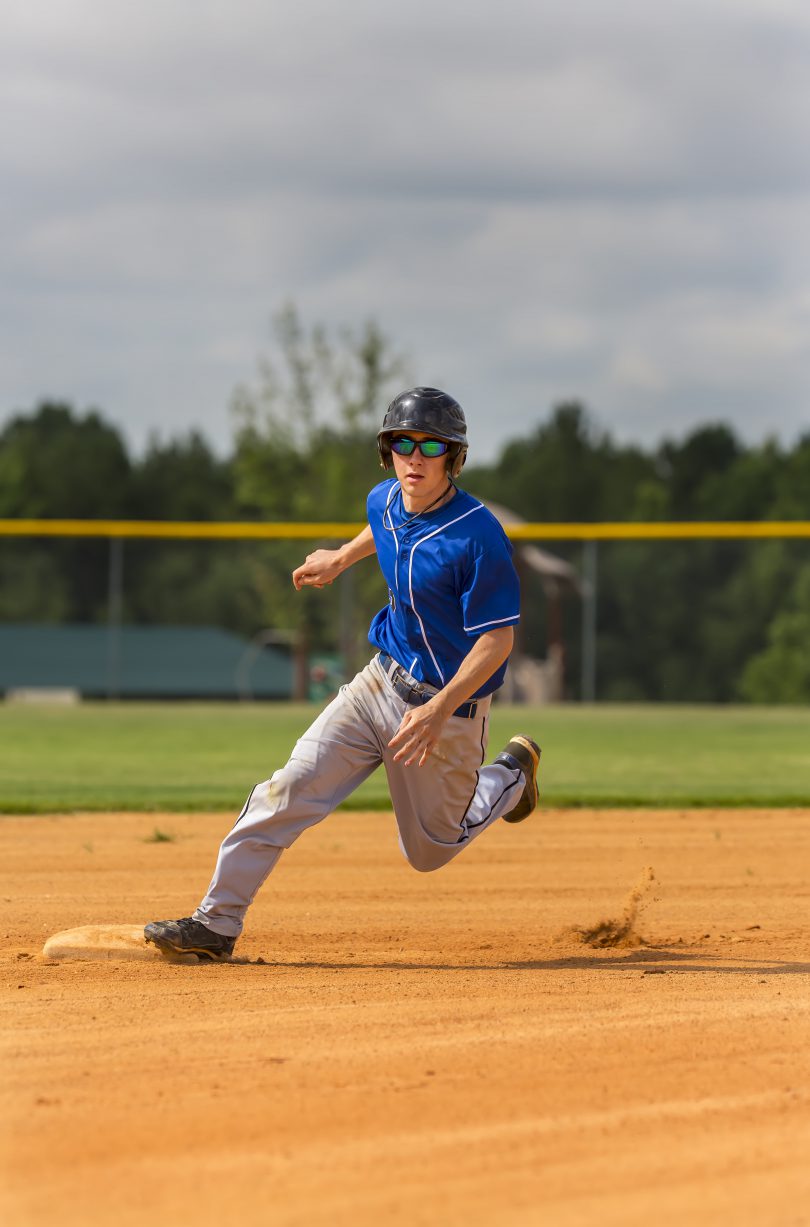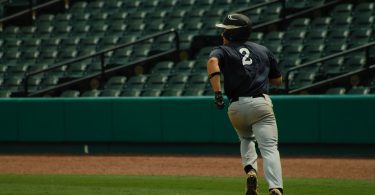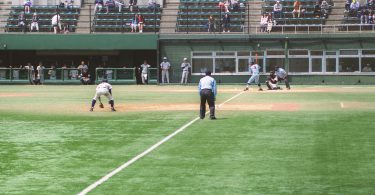The Situation:
There’s a runner on 1st and 1 out in the top of the 5th inning of a 4-2 ballgame, with the visitors trailing.
The Play:
The batter lines a ball in the left centerfield gap. The left-handed throwing centerfielder closes on the ball by angling straight across towards the left fielder. He gets to the single and works around the inside (infield side) of the ball to spin, align himself to third, and make a strong throw. At the crack of the bat, the base runner at 1st knows the ball will get down. He watches the ball and fielder as he approaches second. Fifteen to twenty feet before reaching second, he turns his attention to the 3rd base coach who is switching his attention between the ongoing play and the runner. When the runner looks at him, the 3rd base coach isn’t waving him or holding him up. The runner doesn’t quite know what to do and starts to slow down. By the time the coach realizes the base runner is relying on him and starts to waive him around, it’s too late. The runner has already shut it down. He retreats back to second as the throw comes into the cutoff man.
The Outcome:
With runners on first and second, the next hitter comes up and scorches a line drive right to the left fielder. It’s caught and the runners don’t advance. The next batter bounces out to the pitcher and the score stays the same.
What Went Wrong:
At younger ages, many ball players are told that they should pick up their 3rd base coach as they approach second base on balls hit to the outfield. This sets the precedent for base running mistakes like the one we see made in this play. It may surprise you, but on a play like this with the ball and fielder right in front of the base runner, the 3rd base coach should have nothing to do with the decision. The runner already has all the information he needs to make the decision and the base coach can provide little insight.
At the college level, reliance on coaches to make on-the-fly decisions changes considerably because players have more experience to rely on and can think the game at a higher level. In fact, in college baseball, there are very few plays where a base runner starting at 1st base will rely on his 3rd base coach for the decision to go to third. What the base coach can provide is additional information about changes in the situation that might happen after the runner has made his decisions. For example, if a runner determines he can’t advance and starts to slow down, the base coach can alert him of a bobble or mistake. For these reasons, picking up the base coach is still important, but anytime a runner can make the decision entirely on his own is the best case scenario. No one can judge the speed and jump that the runner got better than himself.
If a player has done his homework (knows the strength of the outfield arms, knows where the outfielders are positioned, understands the way field conditions will impact the play, understands his speed, etc.), the only possible ball where he might need help is one where he is running “completely blind”, meaning the ball is hit down the right field line and the play will not be in his field of vision for more than a split second. Under these circumstances, a base runner is expected to have the coach be his eyes and decision-maker because he simply doesn’t have time to gather the information he needs to make a smart decisions. But even a ball hit right at the right fielder or slightly to his center field side are balls where the runner should have enough time to gather information to make his decision as he runs.
Going first to third is all about being prepared in the previously mentioned ways, understanding the situation, and being able to make quick reads on the ball. If you watch the game closely, you will notice patterns of hits that allow runners to go 1st to 3rd. If you really put your attention on thinking the game and recognizing patterns, you will know if you should go or not almost as soon as a ball is hit. As a general rule of thumb, anytime the outfielder has to run a long distance from his starting position or has his momentum carrying him away from 3rd base, there is a high percentage chance of being able to make it to 3rd safely. Of course you have to factor in your speed and the jump you get, in addition to the outs and scenario, but these are things you should already be doing. At the amateur level, base runners who have a good plan and run with intent can make it to 3rd far more often than they might think. Start preparing for these situations now and always think the game!







